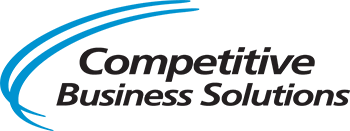Rapid Modeling Reveals Gaps in Supply Chain
Overview
A CBS client machines complex engine components for commercial and military jet engines. This facility supplies critical-path final assembly parts and aftermarket spares inventories for worldwide distribution centers. For over 9 months, the company has not met customer delivery schedules and faces a potential increase in demand in 2021. The company is also under severe cost pressures as profitability and cash flow are falling short of desired targets.
The Challenge
The client utilizes a complex machining process with aging machines coupled with a global supply chain. The layout of the facility does not enable a “line of site” production flow. Moreover, sixty percent of the part content has outside operations—traveling 11,700 miles, thus resulting in long and unpredictable lead times.
“The Art of the Possible showed us that due to our part lead times, we were starving the supply chain with respect to standard WIP—we would never have caught up.”
—Plant Manager
The Approach
CBS’s first step was to complete its industry leading business diagnostic, the “Art of the Possible” (a capability model) tool, at the request of the engagement leadership sponsor. The sponsor had worked with CBS in another engagement with great success. CBS worked with site scheduling, production control, manufacturing technology and operators to populate the Art of the Possible tool and discuss day-to-day issues. This teamed approach provided all stakeholders in the process with an input on the future state improvements. Involving operators in designing the activities proved crucial to sustaining these improvements. CBS’s philosophy maintains it is critical for team success that each and every employee see the flow of value to the customer and be able to fix that flow before it breaks down.
The capability model revealed a very complex value stream, and the current operational system was not capable of meeting throughput. The model showed gaps and focus areas to develop the future state opportunities:
- Outside processing at suppliers drove a large portion of the standard lead time (almost 2X of in-house).
- Two critical outside processors were not being supplied with standard WIP causing major schedule delays—7 parts below standard WIP requirements.
- There lacked an opportunity to analyze the over and above time for critical machining operations that drive hours/unit. The first machine operation was 133% above standard hours.
The transformation was executed by running Kaizen events that implemented that focused on reducing part lead time by:
- creating standard work with an optimal crew to achieve throughput.
- training all existing and new operators on standard work and work cell requirements.
- cultivating work cell layout to ensure all tools for set up and dimensional checks were in the work cell.
- establishing a 5S program to sustain work cell improvements.
The Kaizen team also held a series of meeting focused on :
- working alongside the plant procurement team to identify qualified suppliers closer to the machining operation.
- developing a technical supplier qualification schedule with the plant manufacturing engineering team.
“Creating standard work for our set ups to train new operators will be critical to our success.” —Machining Leader
Statistical Results
- 100% improvement in part throughput, erasing a 9-month behind-schedule condition (2 to 4 parts per month)
- 100% increase in monthly revenue by meeting scheduled demand ($200k to $400k per month)
- 74% reduction in outside processing part travel by qualifying local suppliers (11,700 miles to 3,000 miles)
- 42% reduction in part lead time with a combined effort of localizing outside processing, implementing cellular workflow, standard work, standard work in process and optimal crew staffing (7 weeks to 4 weeks)
Conclusion
This part was a very critical component of the final assembly and overall company financials. Several prior improvement efforts had been attempted by the client with little success. Deploying the CBS capability modeling tool, “Art of the Possible,” provided the client a sustainment model to meet current and future demand requirements. The transformational roadmap focused on strategic and tactical solutions exclusively designed to meet recovery schedule requirements, future demand and plant financials. The key to this transformational success was partnering with operators to collaborate and share a common vision for success using the power of Kaizen.
About Competitive Business Solutions (CBS)
Competitive Business Solutions consultants are masters of world-class operating and lean sigma principles. Creative problem-solvers throughout the improvement process—from initial discovery and strategic solution development to implementation and knowledge transfer—CBS consultants take pride in their client relationships, working side-by-side with every member of onsite teams to identify performance issues quickly and effectively, with significant and sustainable business improvement as a result.
Case Studies:
Join our community.
Sign up now to receive future news.
